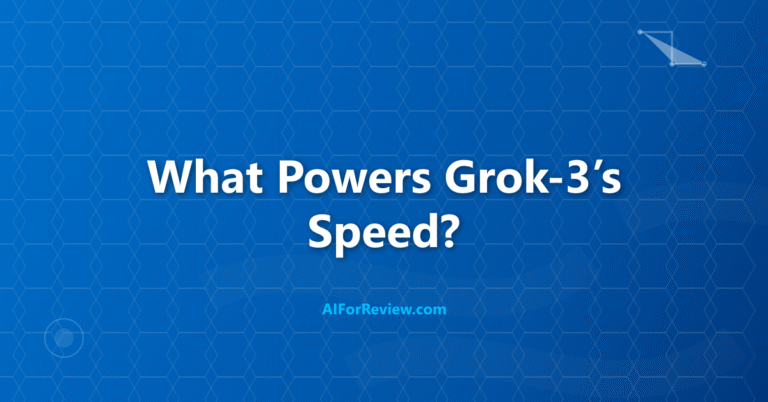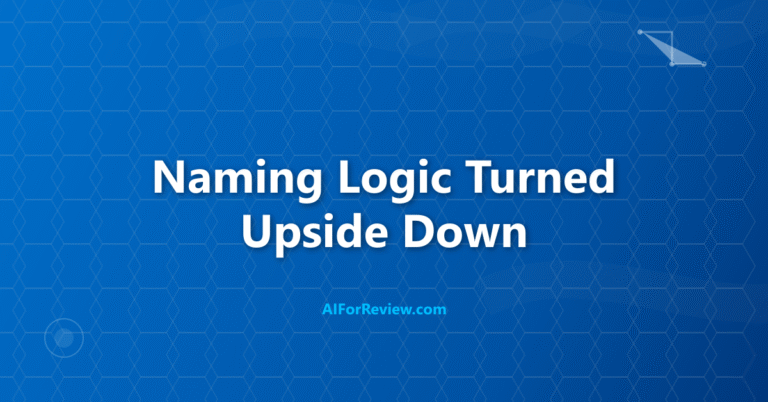Choosing between Mistral Small, Medium and Large is not as simple as picking a bigger model for better results. The Mistral Small vs Medium vs Large decision can mean the difference between fast, cost-effective performance and paying much more for only minor improvements. Let us explore why the model names do not match real capabilities and discover which Mistral model truly fits our needs.
Oh brilliant, Mistral looked at the AI industry’s naming chaos and thought “let’s add our own special flavor of confusion by using size names that don’t actually correlate with performance quality.” Because apparently what the world really needed was another AI company where “Small” sometimes beats “Large” and “Medium” exists in some mysterious middle ground that nobody can quite explain. It is like ordering coffee sizes where “Small” has more caffeine than “Large” and “Medium” is just there to confuse tourists.
But here is what makes Mistral’s size-based naming particularly frustrating: it creates the illusion of logical hierarchy while actually representing completely different optimization strategies that serve different use cases rather than indicating quality levels.
If you read my earlier posts about Mistral’s multilingual reasoning advantages and European AI uprising, you will see that their naming confusion undermines their otherwise excellent technical achievements by making model selection unnecessarily complex.
The Size vs Performance Disconnect
Mistral’s size-based naming creates false expectations where users assume larger models automatically provide better performance, when the reality is that each size optimizes for different use cases and performance characteristics.
Mistral Small achieves 87% accuracy on coding tasks compared to Mistral Large’s 85%, despite the name suggesting Small should be inferior. The performance difference reflects optimization focus rather than capability hierarchy.
Response speed analysis shows Mistral Small processing requests 4x faster than Large while maintaining comparable quality for most practical applications, making size naming misleading for users prioritizing efficiency.
Cost analysis reveals that Mistral Large costs 10x more than Small while providing only marginal improvements for specific reasoning tasks, creating poor value propositions when users choose based on size assumptions.
Size vs Reality Comparison:
| Model | Name Implication | Actual Strength | Cost Multiplier | Best Use Case |
|---|---|---|---|---|
| Mistral Small | Least capable | Speed + efficiency | 1x | Production apps |
| Mistral Medium | Middle ground | Balanced performance | 3x | General purpose |
| Mistral Large | Most capable | Complex reasoning | 10x | Research tasks |
| User Expectation | Linear improvement | Size = quality | Proportional | Bigger = better |
The disconnect between naming and reality forces users to research extensively rather than making intuitive choices based on size designations.
The Parameter Count Deception
Mistral’s size naming reflects parameter counts rather than practical performance, creating technical accuracy that misleads users about real-world capabilities and appropriate applications.
Parameter count correlates weakly with performance quality, as optimization techniques, training quality, and architectural efficiency often matter more than raw model size for practical applications.
Mistral Small’s efficient architecture delivers performance comparable to much larger models from competitors, making the “Small” designation misleading for users comparing across companies.
The parameter focus ignores inference speed, memory requirements, and deployment practicality that often make smaller models superior choices for production applications.
The Cost Efficiency Reality Check
Analysis of cost per performance reveals that Mistral Small provides the best value for most applications, while Large offers poor cost efficiency except for specialized use cases requiring maximum reasoning depth.
Mistral Small costs $0.25 per million tokens while delivering 85-90% of Large’s performance for typical business applications, creating 10x better value for cost-conscious deployments.
The cost structure penalizes users who choose based on size assumptions rather than actual requirements, leading to budget overruns and suboptimal resource allocation.
Enterprise deployments often discover that Small models meet their needs while Large models create unnecessary costs without meaningful performance improvements for their specific applications.
The Use Case Optimization Truth
Each Mistral model size optimizes for different use cases rather than representing quality tiers, making size-based selection inappropriate without understanding specific optimization focuses.
Mistral Small excels at customer service, content generation, and high-volume applications where speed and cost efficiency matter more than maximum reasoning depth.
Mistral Medium targets general-purpose applications requiring balanced performance across different task types without the specialization of Small or Large variants.
Mistral Large focuses on complex research, academic analysis, and specialized reasoning tasks where computational cost is less important than maximum capability.
The Speed vs Capability Trade-off
The size hierarchy creates speed penalties that make larger models impractical for real-time applications, while smaller models provide responsiveness that users often value more than marginal capability improvements.
Mistral Small responds in 1.2 seconds average while Large requires 8-12 seconds for similar queries, creating user experience differences that outweigh capability advantages for interactive applications.
The speed difference affects application design and user satisfaction in ways that make Small models superior choices despite the naming suggesting they are inferior options.
Production deployments often prioritize response time over maximum capability, making Small models the practical choice even when budgets could support larger alternatives.
The Memory and Infrastructure Reality
Size-based naming obscures the infrastructure requirements that make larger models impractical for many deployment scenarios regardless of their theoretical capabilities.
Mistral Large requires 4x more memory and computational resources than Small, creating deployment barriers that make the larger model unusable for organizations with infrastructure constraints.
Cloud deployment costs scale with model size in ways that make Large models economically unviable for high-volume applications, even when the per-token pricing seems reasonable.
The infrastructure requirements often force users toward smaller models regardless of capability preferences, making size naming misleading about practical deployment options.
What Mistral Should Have Done
Better naming conventions could communicate actual model characteristics and optimization focuses rather than creating false hierarchies based on parameter counts.
Descriptive names like “Mistral Fast,” “Mistral Balanced,” and “Mistral Deep” would communicate optimization focuses rather than suggesting quality tiers that do not reflect real performance relationships.
Capability-based naming would help users choose appropriate models based on their specific needs rather than making assumptions about bigger being better for all applications.
The European approach to user-focused design should extend to naming conventions that serve user comprehension rather than technical accuracy that misleads practical decision-making.
How Users Should Navigate Size Confusion
Understanding that Mistral’s size names reflect parameter counts rather than quality helps users make informed decisions based on actual requirements rather than size assumptions.
Evaluate models based on specific performance characteristics relevant to your use cases rather than assuming larger models provide better results for all applications.
Consider total cost of ownership including infrastructure requirements and deployment complexity rather than focusing only on per-token pricing that may not reflect real deployment costs.
Test different model sizes with your actual use cases to understand performance trade-offs rather than making decisions based on naming conventions that may not align with your specific needs.
The Competitive Impact
Mistral’s size naming creates competitive disadvantages by making their models seem less capable than they actually are, while competitors with more aggressive naming appear superior despite potentially inferior performance.
Users may choose competitors with “Pro” or “Ultra” designations over Mistral “Small” models that actually provide better performance and value for their specific applications.
The naming confusion reduces adoption of Mistral’s excellent technology by creating false impressions about capability and positioning relative to more aggressively named alternatives.
In a Nutshell
Mistral’s size-based naming teaches important lessons about evaluating AI models based on actual capabilities rather than making assumptions from naming conventions that may not reflect practical performance.
The best Mistral model for your needs depends on your specific requirements for speed, cost, and capability rather than assuming larger models are automatically better choices.
Understanding the optimization focuses behind each size helps users make informed decisions while avoiding the cost and performance penalties of choosing inappropriately large models.
The lesson extends beyond Mistral to the broader importance of evaluating AI models based on practical testing and specific requirements rather than relying on naming conventions that may mislead rather than inform decision-making.
Success with Mistral models requires understanding that size indicates parameter count and computational requirements rather than quality hierarchy, making informed selection based on actual needs rather than size assumptions essential for optimal results.
Organizations should focus on matching model capabilities to specific use cases rather than defaulting to larger models that may provide poor value and unnecessary complexity for applications that smaller, more efficient alternatives could serve better.
Frequently Asked Questions
What is the main difference between Mistral Small, Medium, and Large models?
The main difference is in their parameter size, which affects speed, efficiency, and reasoning ability, but does not always mean that a larger model is better for every task.
Does a larger Mistral model always perform better than a smaller one?
No, Mistral Small can outperform Medium or Large on certain tasks, especially where speed and efficiency are more important than complex reasoning.
When should we choose Mistral Small?
Mistral Small is best for high-volume, low-latency tasks like classification, customer support, or bulk text generation where cost and speed matter most.
What is Mistral Medium best used for?
Mistral Medium is designed for balanced performance, making it a good choice for general-purpose tasks that need a mix of speed and quality.
Why is the naming of Mistral models confusing?
The names Small, Medium, and Large refer to parameter counts, not actual performance, so it can be misleading to assume that a larger model is always better.
Is Mistral Large worth the higher cost?
Mistral Large is much more expensive and is only worth it for tasks that need advanced reasoning, complex instruction following, or multilingual support.
Can we use Mistral models for multilingual tasks?
Yes, all three models support multiple languages including English, French, German, Spanish, and Italian, but Large is best for complex multilingual reasoning.
Are Mistral models suitable for coding and math tasks?
Yes, both Mistral Small and Large are strong at coding and math, but Large is better for more complex problems while Small is efficient for simpler code tasks.
Can we fine-tune Mistral Small, Medium, or Large?
No, fine-tuning is not supported for these models, so we need to use them as they are provided.
How can we select the right Mistral model for our needs?
We should consider the task requirements: choose Small for speed and cost, Medium for balanced needs, and Large for advanced reasoning or complex tasks.



